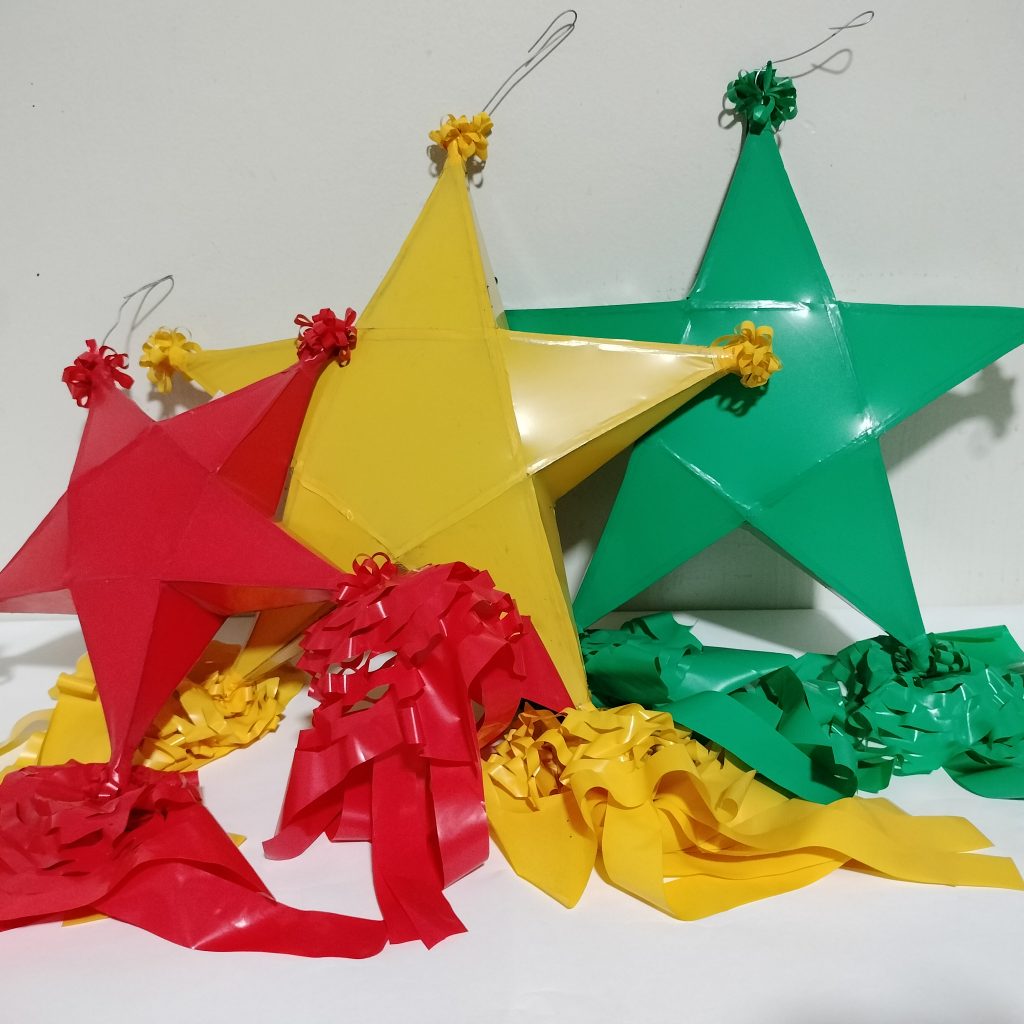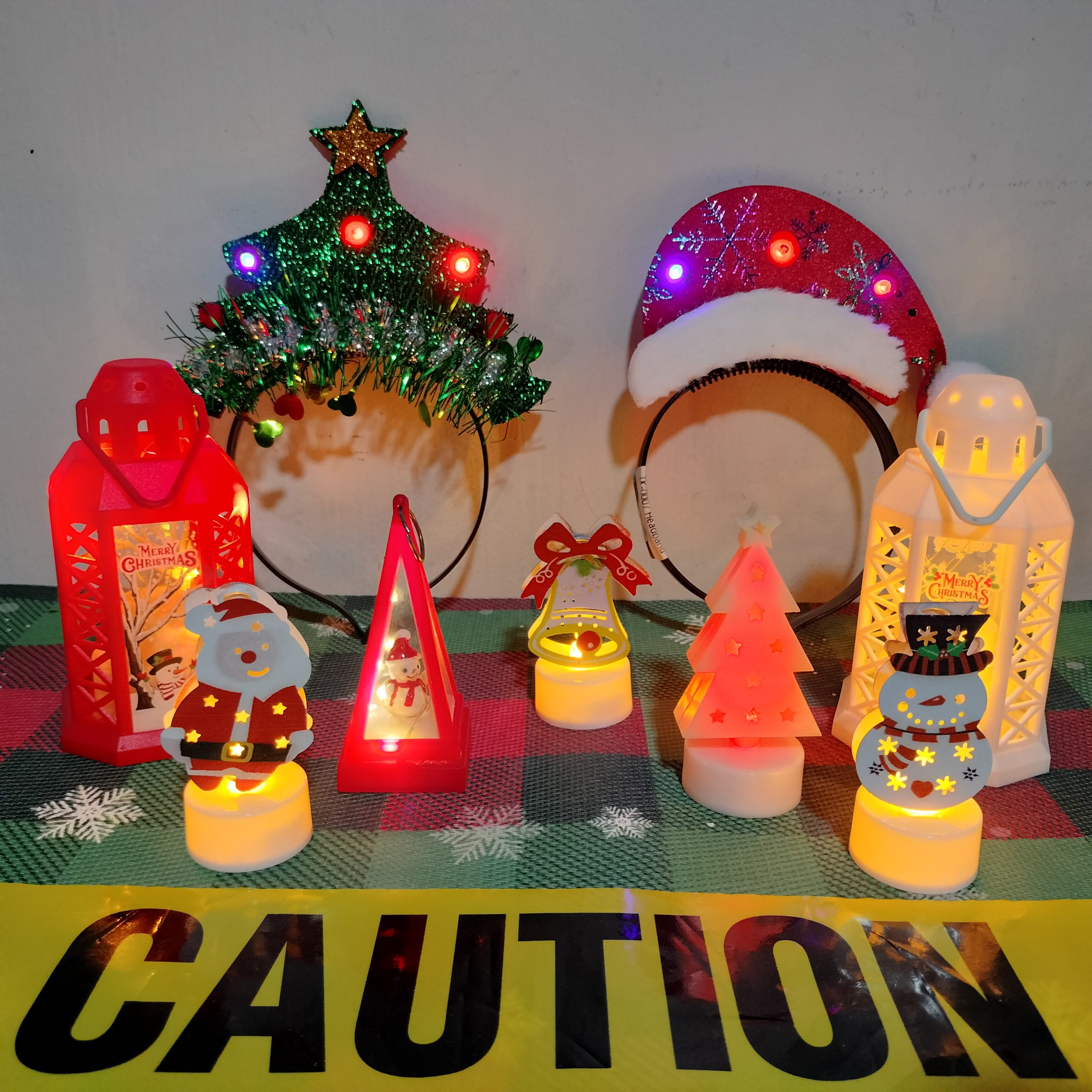QUEZON CITY — As spooky Halloween decorations are quickly taken down and replaced with jolly Christmas ornaments, a toxics watchdog group has alerted consumers on which items to avoid to safeguard human health and the environment, too.
Amid the early shopping for Christmas ornaments and the like, the EcoWaste Coalition went to Binondo and Tondo, Manila City, Monumento, Caloocan City and Cubao, Quezon City during the Undas weekend to purchase assorted items used to evoke the festive Christmas mood.
The 55 items purchased consisted of the iconic “parol,” lighting chains, garlands, embellishments for Christmas trees, and other ornaments representing well-known Yuletide figures, including Santa Claus, Frosty, Gingerbread Man, etc.
“It’s again the time of the year when homes, schools, offices and everything else are adorned with things that add to the magic of Christmas,” said Aileen Lucero, National Coordinator, EcoWaste Coalition.
“However, not all Christmas decorations are created equally,” she emphasized. “Some may contain ingredients or components that pose a threat to our health, as well as the environment.”
To illustrate the dangers hiding in some Christmas ornaments being offered for sale in the market, the EcoWaste Coalition drew attention to the following observations and findings:
1. Three “parols” made out of polyvinyl chloride (PVC) plastic contain cadmium at levels exceeding the 100 parts per million (ppm) limit set by the European Union (EU) for all plastic types. A yellow PVC parol contains 207 ppm cadmium, while the red and green ones contain 171 ppm and 137 ppm, respectively. Cadmium, according to the World Health Organization (WHO), “exerts toxic effects on the kidneys as well as the skeletal and respiratory systems” and “is classified as a human carcinogen.”

2. Ten Christmas lights were found not to carry the mandatory Philippine Standard (PS) mark or Import Commodity Clearance (ICC) sticker, indicating non-compliance with the required quality and safety certification process. The black and green cords of five products were found to contain lead ranging from 2,868 ppm and 7,960 ppm, while the solders of one product had 2,072 ppm. Lead cannot exceed the 1,000 ppm limit under the European Union’s Restriction of Hazardous Substances (RoHS) in electrical and electronic products. According to the EU, “lead poses a risk to the environment and is harmful to human health, as it accumulates in the body, can cause developmental neurotoxicity and may affect breast-fed or unborn children.”
5. Thirteen assorted Christmas decorations are embellished with glitters, which are mostly a combination of aluminum and plastic. Due to their small particle size, glitters can easily travel through the wastewater and into the oceans, threatening aquatic organisms who mistakenly ingest these microplastics as food. To reduce microplastic pollution, the EU banned loose glitters and certain products containing them in October 2023. While articles with glitters affixed on their surface do not fall within the scope of the restriction, the EcoWaste Coalition urged consumers to choose items without microplastic glitters, noting glitters can fall off from such decorations.The group used a handheld X-Ray Fluorescence (XRF) analyzer to screen the Christmas decorations for chemicals of concern such as cadmium, lead, antimony, and bromine.
For eco-friendly and safer yuletide decorations, the EcoWaste Coalition urged consumers to consider the following reminders:
1. Choose “parols” made of paper and indigenous materials such as bamboo, coconut husk and shell, palm leaves and other plant-based stuff.
2. Pick quality and safe Christmas lights with an authentic PS mark or ICC sticker to avoid electric shock and fire hazard. Check the list of DTI-certified Christmas lights before making a purchase. See: https://www.dti.gov.ph/archives/news-archives/dti-bps-list-of-certified-christmas-lights/
3. Avoid Christmas ornaments with button cell batteries that are not in child-resistant packaging. The battery must be secure and not easily opened by young children.
4. Refrain from buying decorations with recycled black plastic parts unless marked as safe from BFRs and other harmful substances.
5. Opt for decorations without microplastic glitters. Better still, go for plastic-free adornments that are made of fabrics and native materials.
6. Before shopping for decorations, try to create upcycled Christmas ornaments from used wrappers, product containers, tin cans, glass bottles, mason jars, paper boxes, toilet paper rolls, magazines, and other discards.
The EcoWaste Coalition, an environmental health organization, advocates for an ecological observance of the Christmas and New Year season to prevent and reduce waste, and conserve the Earth’s finite resources amid the climate emergency, biodiversity loss and pervasive pollution facing Mother Earth.
-end
Reference:
https://www.dti.gov.ph/archives/news-archives/dti-bps-list-of-certified-christmas-lights/

